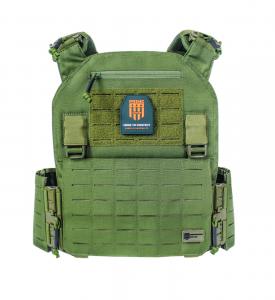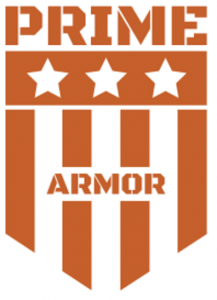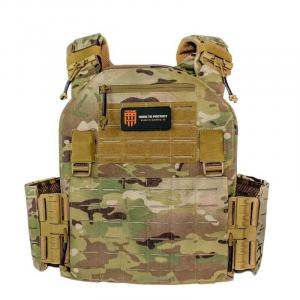How to choose a bulletproof vest
How to choose the right body armor and not be mistaken
SPRING, TEXAS, UNITED STATES, June 24, 2021 /EINPresswire.com/ -- Despite the fact that the world community associates them with SWAT police officers, bulletproof vests are worn by patrol officers, private security guards, and anyone who needs protection from bullet wounds.The first modern vests were developed in the 60s for the military, and in 1969 they were used for the police, a year after the creation of the first SWAT team.
If you are considering purchasing a plate carrier vest for your own protection, here are some things you should definitely know before buying.
1. Know the difference between heavy and light armor.
Heavy protection uses metal or ceramic plates to prevent penetration by any projectile, from a rifle or shotgun.
The lightweight protection uses layers of special fabric to stop the bullet and absorb the force of the impact.
Light protection stops projectiles of most pistols, shots up to 12 gauge.
• Heavy protection plates are available in steel, ceramic or polyethylene.
They have high resistance to impact with their face, but as far as non-metallic plates are concerned, they are vulnerable to impacts on their edges, so caution is advised when packing and transporting them.
• Lightweight protection made of reinforced fiber such as Kevlar or Twaron or resin impregnated analog or interwoven polyfiber such as Spectra or Dyneema.
The newer polyfiber is better at absorbing impact than older reinforced ones, although lighter, but also more vulnerable to environmental degradation.
Experiments are currently underway with carbon nanotubes as a possible material for vests, as well as experiments using gel-like fluids to incorporate them into existing fibers to increase collision protection.
Know the existing levels of protection.
Bulletproof vests are classified according to impact absorption and projectile resistance.
Protection levels currently include the following:
• Level II-A - thinnest body armor.
Mainly 4 mm (0.16 inches) thick and made of soft materials.
Designed to be worn under clothing for a long period of time.
• Level II - body armor generally 5 mm (0.2 inches) thick.
Commonly used by US patrol officers.
They can dress, as well as under loose clothing and on top.
• Level III-A - body armor with a thickness of 8 to 10 mm (0.32 to 0.4 inches).
Heavier and denser than levels II-A and II.
Designed to withstand heavier bullets such as the .44 Magnum and rapid-fire weapons such as the 9mm submachine gun.
Designed for small military engagements, but can also be worn under clothing.
• Tier III and Tier IV - body armor includes 10- to 12-inch (25- to 30-cm) reinforced plates, ranged from 1/2 to ¾ inches (6 to 25 mm) thick to cover the abdomen and back ...
Each plate adds 4 to 9 pounds (1.8 to 4.1 kg) to 3-5 pounds (1.36 to 2.27 kg) of light armor and thus reduces its portability.
These vests cannot be worn under clothing and are usually used by SWAT officers. Check more info at the Prime Armor LLC.
• In body armor with protection from a knife or stab wounds, plates are used similar to those embedded in vests of III and IV levels (such vests are worn to protect against knife attacks, prisoners using contraband and improvised knives and stilettos).
There are 3 levels of protection created after testing the protection against shock pressure with a limited penetration of 0.28 "/ 7mm:
Level 1 - protects against a pressure of 24 Joules,
Level 2 - protects against a pressure of 33 Joules,
Level 3 - against a pressure of 43 Joules.
the plates of III and IV levels, they add weight to the body armor, reducing their mobility; but, nevertheless, in the future it will be possible to wear them under clothes.
Following the research results, these plates can be replaced with helium plates.
• Some body armor allows the addition of additional reinforced plates for more protective layers.
In such vests, additional plates can be adapted to make a bulletproof vest with protection from a knife, but a light bulletproof vest can only protect against a sliding knife strike, but not penetrating.
4. Decide if you want to wear a concealed body armor.
Level II and II-A vests can be disguised as a loose shirt or T-shirt.
Level III-A vests can be hidden under a sweater or suit jacket for greater efficiency.
Meanwhile, level III and IV vests are masked only with a heavy jacket or sweater or military uniform and are often worn over clothing.
• Bulletproof vests that are worn under clothing are often white, so they can be confused with a T-shirt if you do not usually button up the top button.
The bullet-proof vest worn on clothes is always black.
5. Choose a vest that suits you.
A bulletproof vest should definitely fit you well, and you should feel comfortable wearing it.
A vest that is too large will not fit and slip properly, and a smaller one can injure your internal organs.
Some manufacturers only make vests in standard sizes, which can be a problem if you're shopping online and can't try on the vest before you bargain.
6. Select suitable accessories.
Body armor only protects the chest and back.
If you want to protect your shoulders, neck, sides, or groin, you need extra details.
• There are many markets with official add-ons that fit some or most of the body armor made today.
• Additional parts are attached to the main vest and additionally protect different parts of the body.
There is additional protection for the shoulders (Shoulderguards), for the abdomen (Side protection), neck (Gorget, or Neckguard) and groin (Groinflap).
• Check that the add-ons you purchased fit well with the main vest.
Also make sure they sit neatly on you and do not impede movement.
Sergey
Prime Armor LLC
(503) 205-0612
email us here
Visit us on social media:
Facebook
Legal Disclaimer:
EIN Presswire provides this news content "as is" without warranty of any kind. We do not accept any responsibility or liability for the accuracy, content, images, videos, licenses, completeness, legality, or reliability of the information contained in this article. If you have any complaints or copyright issues related to this article, kindly contact the author above.



